This article was written by Brendan Horton, Security Analyst.
Cloud security encompasses the policies, technologies, and practices designed to protect cloud-based resources, including data, applications, and infrastructure, from a wide range of cyber threats. Cloud computing has become the technology of choice for organizations wanting scalability and flexibility to meet their business needs. However, migrating to sophisticated cloud environments presents new challenges in terms of security. Ensuring that data remains secure across online infrastructure, applications, and platforms requires an initiative-taking approach.
What Is Cloud Computing?
Cloud computing refers to the delivery of computing services over the internet. Instead of hosting software, applications, and data on local servers or personal devices, organizations can access these resources remotely through cloud service providers. The most common and widely adopted cloud computing services are:
- Infrastructure as a Service (IaaS) provides virtualized computing resources such as virtual machines, storage, and networking. IaaS allows customers to purchase and interact with the basic building blocks of a technology infrastructure without needing to worry about the management of the underlying hardware.
- Software as a Service (SaaS) is designed to provide a complete packaged solution, where the software is rented out to the user. It delivers ready-to-use software applications over the internet, eliminating the need for installation and maintenance.
- Platform as a Service (PaaS) offers a platform where customers may run applications that they have developed themselves. The service provider builds and manages the infrastructure and offers an execution environment for users to build, deploy, and facilitate code execution.
Why Is Cloud Security Important?
As more and more organizations transition from on-premises to cloud-based environments, there is a critical need to reconsider security approaches, particularly concerning data governance and compliance, which within the past few months have been under intense regulatory scrutiny.
In today’s hybrid and multi-cloud landscape, organizations enjoy unprecedented flexibility in choosing where and when to deploy their resources. However, this newfound freedom also introduces complexities in security that go beyond the traditional scope of network access control. Regrettably, some organizations tend to prioritize the pace of their digital transformation over security best practices, treating security as an afterthought. As a result, cyber attackers view cloud-based targets as potentially lucrative opportunities and adapt their strategies to exploit these businesses.


